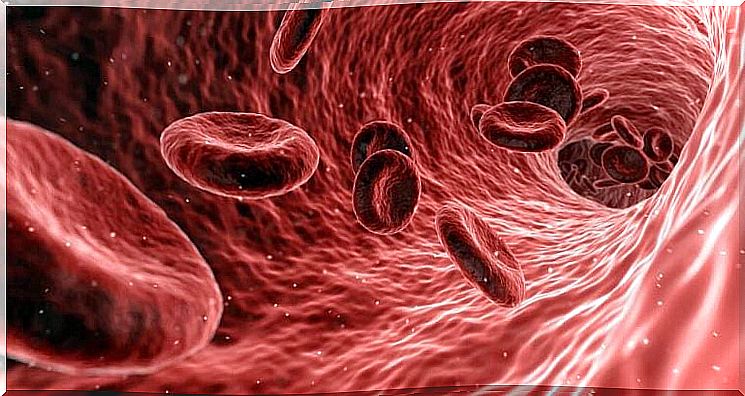Hughes Syndrome And Spontaneous Miscarriages

In this article, we’ll tell you all about Hughes Syndrome and spontaneous miscarriage.
Are you trying to get pregnant and want to have an optimal delivery? If you have had one or more spontaneous abortions, you could have Hughes syndrome .
What is Hughes Syndrome?
Hughes syndrome is a rare condition in which the blood is viscous and sticky.
This property of the blood causes blood clots to form in the blood vessels. These blood clots are also known as thromboses.
They can appear in any vein and even in the arteries. The latter increases the risk of suffering a stroke.
In pregnant women, Hughes syndrome can lead to spontaneous abortions during the second trimester because the placenta is not resistant.

Causes of Hughes Syndrome
This disease is also known as antiphospholipid syndrome or APS.
This disease is caused by the production of abnormal proteins called antiphospholipid antibodies in the blood.
These antibodies stimulate the immune system, which in turn promotes blood clotting.
Types of Hughes Syndrome
- Primary. The disease is considered primary when it is not related to other diseases such as lupus.
- Secondary. Secondary Hughes syndrome is due to an autoimmune disease that damages several of the body’s systems, including the vascular system.
Symptoms of Hughes Syndrome
This disease usually does not have symptoms warning of its occurrence.
But there are certain signs that can be confused with other diseases. The most common symptoms are:
- Severe headache or migraine.
- Joint pain.
- Circulatory disorders.
- Cold skin.
- In acute cases, epilepsy and a blue-violet skin discoloration of the knees and elbows can occur.
Women who suffer from this disease can experience a spontaneous miscarriage in the first 10 weeks of pregnancy. In some cases, premature births can occur from the 34th week of pregnancy.
How is Hughes Syndrome diagnosed?
A diagnosis of this disease can only be made by a doctor. The doctor will assess the woman’s personal history, family history, conduct an examination, and request certain laboratory tests to rule out or confirm the disease.
Let your doctor know if you have blood clots and other symptoms.
Keep in mind that Hughes syndrome can affect people of all ages. However, good medical treatment can significantly improve the patient’s quality of life.
Common complications of Hughes syndrome
This case of illness can be treated with aspirin, heparin or warfarin. All of these anticoagulants help prevent blood clots when given in certain doses.
If the disease is not diagnosed early, Hughes syndrome can bring with it other complications, such as strokes, blindness, and heart attacks.
In addition, the formation of blood clots can also prevent the body from having constant blood flow.
Another complication of this disease is the formation of blood clots in the lungs. This can cause shortness of breath, chest pain, and cough.

Hughes Syndrome and Pregnancy
Despite all the complications, it is still possible to have a happy pregnancy. For planned pregnancies, blood-thinning treatment is recommended prior to conception.
Without adequate treatment, a woman can suffer from clots in the placenta that impede nutrient supply to the fetus. This can lead to miscarriages and preeclampsia.
Most doctors prescribe aspirin for women who are already pregnant . The treatment is intended to reduce blood viscosity and leads to successful pregnancies in up to 80% of patients.
In conclusion, timely treatment for Hughes syndrome can lead to a positive pregnancy and the prevention of spontaneous abortions.









